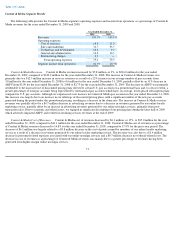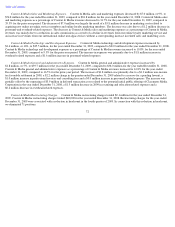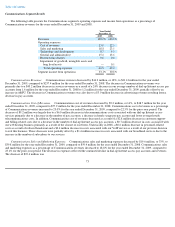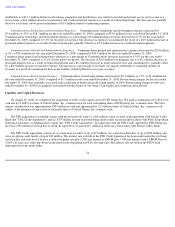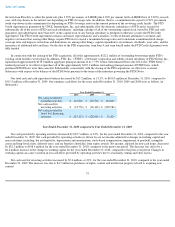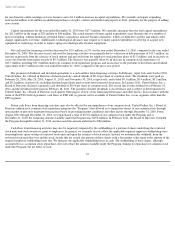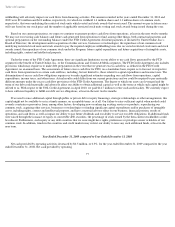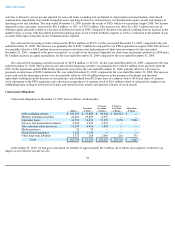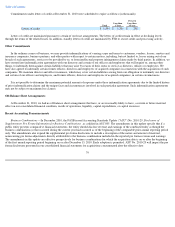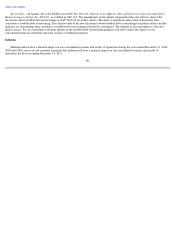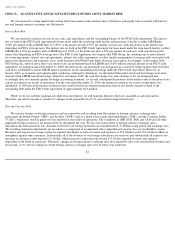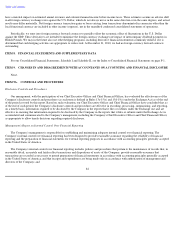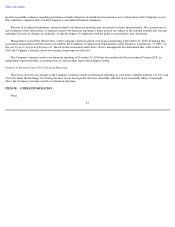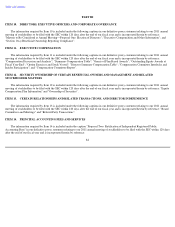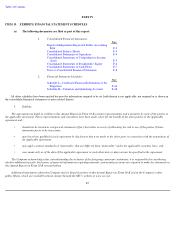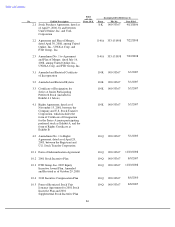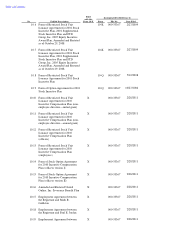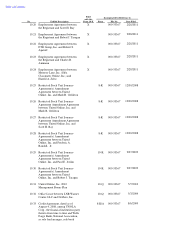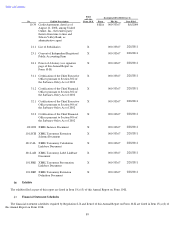Classmates.com 2010 Annual Report Download - page 84
Download and view the complete annual report
Please find page 84 of the 2010 Classmates.com annual report below. You can navigate through the pages in the report by either clicking on the pages listed below, or by using the keyword search tool below to find specific information within the annual report.
Table of Contents
ITEM 7A. QUANTITATIVE AND QUALITATIVE DISCLOSURES ABOUT MARKET RISK
We are exposed to certain market risks arising from transactions in the normal course of business, principally risk associated with interest
rate and foreign currency exchange rate fluctuations.
Interest Rate Risk
We are exposed to interest rate risk on our cash, cash equivalents, and the outstanding balance of the FTD Credit Agreement. The interest
rate set forth in the FTD Credit Agreement for loans made under the revolving credit facility and term loan A facility is either LIBOR plus
3.50% per annum (with a LIBOR floor of 3.00%) or the prime rate plus 2.50% per annum, in each case, with step-downs in the interest rate
depending on FTD's leverage ratio. The interest rate set forth in the FTD Credit Agreement for loans made under the term loan B facility is either
LIBOR plus 4.50% per annum (with a LIBOR floor of 3.00%) or the prime rate plus 3.50% per annum, in each case, with step-downs in the
interest rate depending on FTD's leverage ratio. The FTD Credit Agreement also requires that FTD Group, Inc. maintain one or more interest
rate swap agreements, interest rate cap agreements, interest rate collar agreements, or other similar arrangements to manage risks associated with
interest rate fluctuations and exposures on its credit facilities with Wells Fargo Bank, National Association. Accordingly, in November 2008,
FTD Group, Inc. entered into a three-year interest rate cap instrument based on LIBOR and a $150 million notional amount of our FTD Credit
Agreement. At inception and at December 31, 2008, the interest rate cap instrument was designated as a cash flow hedge against expected future
cash flows attributable to future LIBOR interest payments on the outstanding borrowings under the FTD Credit Agreement. However, in
January 2009, as economic and capital market conditions continued to deteriorate, we determined that prime rate-based borrowings were more
attractive than LIBOR-based borrowings. Therefore, in January 2009, the cash flow hedge was, and continues to be, de-designated and
accordingly does not currently qualify for hedge accounting treatment. As a result, subsequent fluctuations in the market value of the interest rate
cap are recorded in our results of operations. For the year ended December 31, 2010, the amount recorded in our results of operations was
immaterial. A 100 basis point increase in interest rates would result in an estimated annual increase in our interest expense related to the
outstanding debt under the FTD Credit Agreement of approximately $2.6 million.
While we do not currently maintain any short-term investments, we still maintain deposits which are classified as cash equivalents.
Therefore, our interest income is sensitive to changes in the general level of U.S. and certain foreign interest rates.
Foreign Currency Risk
We transact business in foreign currencies and are exposed to risk resulting from fluctuations in foreign currency exchange rates,
particularly the British Pound ("GBP") and the Euro ("EUR") and, to a much lesser extent, the Indian Rupee ("INR") and the Canadian Dollar
("CAD"), which may result in gains or losses reported in our results of operations. The volatilities in GBP, EUR, INR, and CAD (and all other
applicable foreign currencies) are monitored by us throughout the year. We face two risks related to foreign currency exchange rates—
translation risk and transaction risk. Amounts invested in our foreign operations are translated into U.S. Dollars using period-
end exchange rates.
The resulting translation adjustments are recorded as a component of accumulated other comprehensive income (loss) in stockholders' equity.
Revenues and expenses in foreign currencies translate into higher or lower revenues and expenses in U.S. Dollars as the U.S. Dollar weakens or
strengthens against other currencies. Substantially all of the revenues of our foreign subsidiaries are received, and substantially all expenses are
incurred, in currencies other than the U.S. Dollar, which increases or decreases the related U.S. Dollar-reported revenues and expenses
depending on the trend in currencies. Therefore, changes in foreign currency exchange rates may negatively affect our consolidated revenues and
net income. A 1% adverse change in overall foreign currency exchange rates over an entire year would not
81


